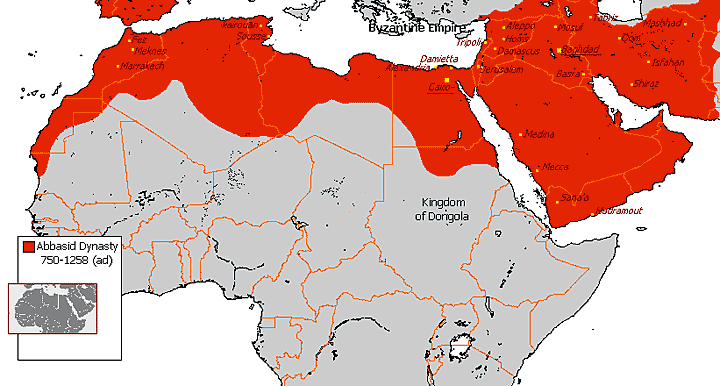
Unit 1: Redefining World Society and Culture
Lesson C: Rise and Fall of the Classical and Medieval World
Activity 5: Examining Secondary Sources
When you examine secondary sources, you should ask questions similar to the ones that you ask when examining a primary source.
- Sourcing: Who created the document and what do you know about the background of the author?
- Contextualization: What was going on at the time it was written?
- Close Reading: What evidence does the author use; what claims does the author make?
- Corroboration: How are multiple perspectives of an event similar or different?
Regardless of which types of sources you use to learn about the past, you must remember that all sources have limitations. All sources should be corroborated (supported) by other sources. This will help you create the best historic narrative.

Abbasids Dynasty [1]
Islamic Empires
From the 7th through the 13th centuries, the Islamic Empires controlled a large section of Asia and parts of Africa and Europe. To learn more about the Islamic Empires, you will work with a group or partner to examine secondary sources about the Islamic Empire. As you examine these secondary sources, think about what you can learn from them, and consider their reliability.
Classroom Activity - Secondary Sources
![]() Discussion
Discussion
Directions: Prepare a response to the discussion questions below. Follow your teacher's directions to participate in your class discussion.
- What questions do you have about the Islamic Empires after examining the secondary sources?
![]() Download the Student Resource: Examining Secondary Sources (doc).
Download the Student Resource: Examining Secondary Sources (doc).
Select the link to review the Discussion Scoring Tool (pdf).
Page Notes:
[1] Source: This image from http://commons.wikimedia.org/wiki/File:Abbasids_Dynasty_750_-_1258_(AD).PNG is licensed under the terms of the GNU License Agreement.

